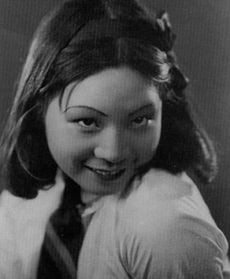

The key insight came to Goeppert Mayer when Enrico Fermi happened to ask her if there was any evidence of spin-orbit coupling. Standard quantum mechanics and a simple central potential couldn’t account for the magic numbers higher than 20. In August 1948, her first paper summarizing the evidence for a shell model of the nucleus was published in Physical Review.Īlthough Goeppert Mayer had collected evidence for the nuclear shell model, at first she couldn’t explain the specific sequence of magic numbers. Goeppert Mayer then considered other nuclear properties, and found they all pointed to more support for magic numbers. Goeppert Mayer, who had less formal training in nuclear physics, was less biased by evidence for the liquid drop model. In addition, physicists assumed that the interactions between nucleons would be too strong for the nucleus to be accurately described by a shell model, which treats nucleons as independent particles. The fact that nuclei with certain numbers of nucleons were especially stable had in fact been noticed before, but physicists were so certain that a shell model could not be correct, in part because an alternative model, the liquid drop model, which treats the nucleus as a homogeneous blob, had been quite successful in explaining fission. Nuclei with completely filled outer shells are most stable.
#University of chicago 1930 dr. mayer series
The orbits form a series of shells of increasing energy. In the nuclear shell model, each nucleon moves in a central potential well created by other nucleons, just as the electrons orbit a potential well created by the nucleus in the atomic shell model. (These numbers became known as “magic numbers,” a term thought to have been coined by Eugene Wigner, who was somewhat skeptical about the shell model.) This observation led her to suggest a shell structure for nuclei, analogous to electron shell structure in atoms. While making this list, it became clear to Goeppert Mayer that nuclei with 2, 8, 20, 28, 50, 82, or 126 protons or neutrons were especially stable. The work involved creating a list of isotope abundances. Here she began working with Edward Teller on a project to determine the origin of the elements.

In 1946, Maria Goeppert Mayer and her husband moved to Chicago, where she was employed half time at the University of Chicago’s Institute for Nuclear Studies and half time at Argonne National Laboratory.

At first she worked on calculations of properties of transuranic elements later she worked with Harold Urey on a photochemical method for isotope separation (the method was abandoned as impractical). Maria Goeppert Mayer was given office space, but no salary. She encountered a similar situation in 1939 when her husband got a job at Columbia University. Nepotism rules prevented the university from hiring her as a professor, so she worked as a volunteer, continuing her own research, most of which involved applying quantum mechanics to chemical problems. After she completed her Ph.D., the couple moved to the US, where he got a job at Johns Hopkins University in Baltimore. While at Göttingen, she met her husband, physical chemist Joseph Mayer. in 1930, with a thesis on double photon reactions. But after attending Max Born’s quantum mechanics seminar, she switched her focus to physics. It was assumed that Maria would get an education, and she did, even though it was difficult for women at the time.Īfter attending public school and a college preparatory academy for girls, in 1924 she entered the University of Göttingen, where at first intending to study mathematics. Her father always encouraged her to grow up to be more than a housewife. In fact, he was the sixth generation university professor in the family, and Maria was later proud of being the seventh generation academic. When she was four years old, her family moved to Göttingen, where her father was a professor of pediatrics. Maria Goeppert was born in 1906 in Kattowitz, which was part of Germany at the time. In August 1948, Goeppert Mayer published her first paper detailing the evidence for the nuclear shell model, which accounts for many properties of atomic nuclei. Nonetheless, she persevered in her research. But during her early career, she was forced to spend many years in unpaid positions before she was able to obtain a professorship in physics.

Maria Goeppert Mayer, who made important discoveries about nuclear structure, is one of only two women to have won the Nobel Prize in physics.


 0 kommentar(er)
0 kommentar(er)
